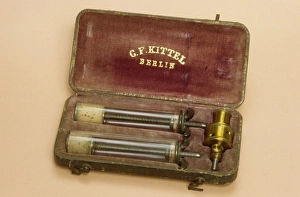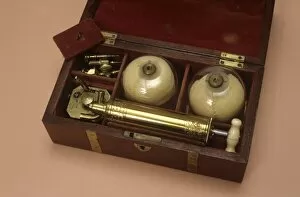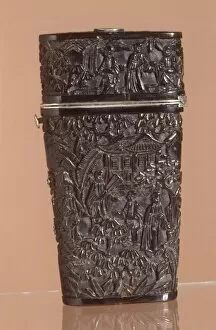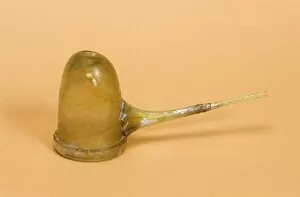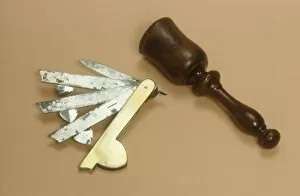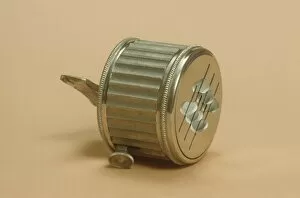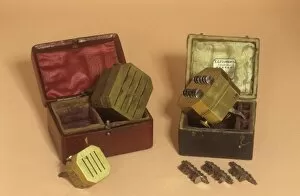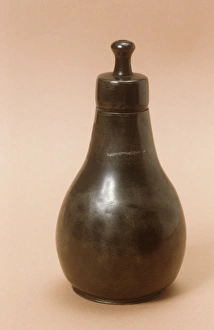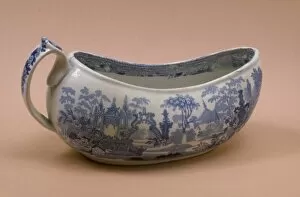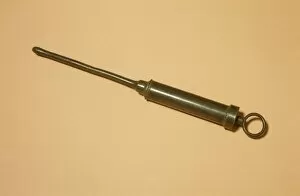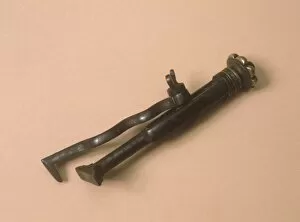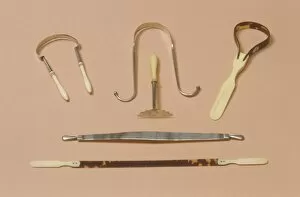Peach Background Collection
Step into the fascinating world of medical history with this peach background display
All Professionally Made to Order for Quick Shipping
Step into the fascinating world of medical history with this peach background display. Delve into the past as you explore artifacts like artificial leeches and syringes from circa 1840, showcasing the ingenuity of early medical practices (C017 / 3582). Witness the evolution of cupping therapy with a set from the 19th century (C017 / 3552), while marveling at an intricately carved horn Lancet case dating back to the 18th century (C017 / 3553). Discover tools that were once used by physicians, such as the Bennet percussor from around 1860, highlighting advancements in diagnosing respiratory conditions (C017 /6934). Uncover an antique veterinary fleam and bloodstick, shedding light on historical animal healthcare practices (C017 /3555). Transport yourself to different eras with items like a crude cupping glass from the 17th century or scarificators and blades dating back to circa1800s (C017/3583 & C017/3559). Marvel at technological innovations like Collin's sphygmometer from approximately1900 or Nicholson's sphygmomanometer circa1910, which revolutionized blood pressure measurement techniques (C017/6972 & C107/6959). Immerse yourself in this captivating collection that showcases humanity's quest for healing throughout time. From ancient remedies to groundbreaking inventions, these artifacts offer a glimpse into our enduring pursuit of better health.


